A well-written project brief is the foundation of a successful web design project. It helps your professional web designer understand your goals, expectations, and brand. When done right, it saves time, avoids confusion, and leads to a website that delivers real results.
1. Start with a Clear Overview
Begin your brief with a summary of your business. Include what you do, your target audience, and your unique selling points. This helps the designer align the design with your brand identity from the start.
Example:
We are a wellness coaching brand targeting busy professionals. Our goal is to promote self-care through one-on-one coaching sessions and downloadable resources.
2. Define the Purpose of the Website
What do you want the website to accomplish? Be specific about your objectives—whether it’s generating leads, selling products, or growing your email list.
Example:
We want users to book a free consultation and download our free eBook to join our email list.
3. Identify Your Target Audience
Knowing your audience allows your designer to create a user-focused design. Include details like age, location, profession, pain points, and online behavior.
Example:
Target audience: Women aged 30–45, working professionals, mostly mobile users, interested in work-life balance and mindfulness.
4. List the Core Features You Need
Make a checklist of the essential features your website must have. This keeps the project focused and avoids scope creep.
Examples:
-
Mobile responsiveness
-
Contact form
-
Blog section
-
E-commerce functionality
-
Appointment booking system
-
Live chat integration
5. Share Branding Guidelines
Provide your logo, color palette, fonts, and any visual assets. If you don’t have brand guidelines, describe the desired look and feel.
Example:
We want a clean, calming aesthetic with soft blues and whites. Fonts should be modern and easy to read.
6. Reference Websites You Like (and Don’t Like)
Include 2–3 websites you admire and explain why. Also, mention what you dislike. This gives your designer inspiration and clarity on your preferences.
Example:
We love [Site A] for its simplicity and [Site B] for its bold headlines. We don’t like overly busy designs like [Site C].
7. Outline the Project Timeline
Set realistic deadlines for each phase of the project. Be sure to include time for reviews and revisions.
Example:
-
Brief Approval: May 5
-
Wireframes: May 15
-
Final Design: May 25
-
Launch: June 1
8. Clarify Your Budget
Being transparent about your budget helps the designer propose solutions that fit. It also prevents delays and misunderstandings.
Example:
Our budget for this project is between $2,000–$3,000, including revisions and testing.
9. Specify Who Will Provide Content
Decide whether you or the designer will provide the text, images, and media. If you’re supplying content, mention when it will be delivered.
10. Include Contact Information and Approval Process
List who the designer will contact during the project and who will give final approval.
Example:
Main contact: Sarah (Marketing Manager) — sarah@email.com
Final approval: John (CEO)
Conclusion
A strong project brief sets the tone for collaboration and success. It ensures your professional web designer understands your goals, audience, and expectations from day one. The clearer your brief, the smoother—and more effective—your web design journey will be.

